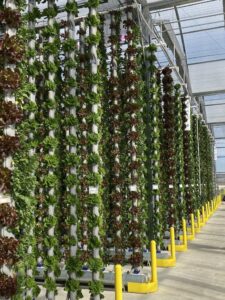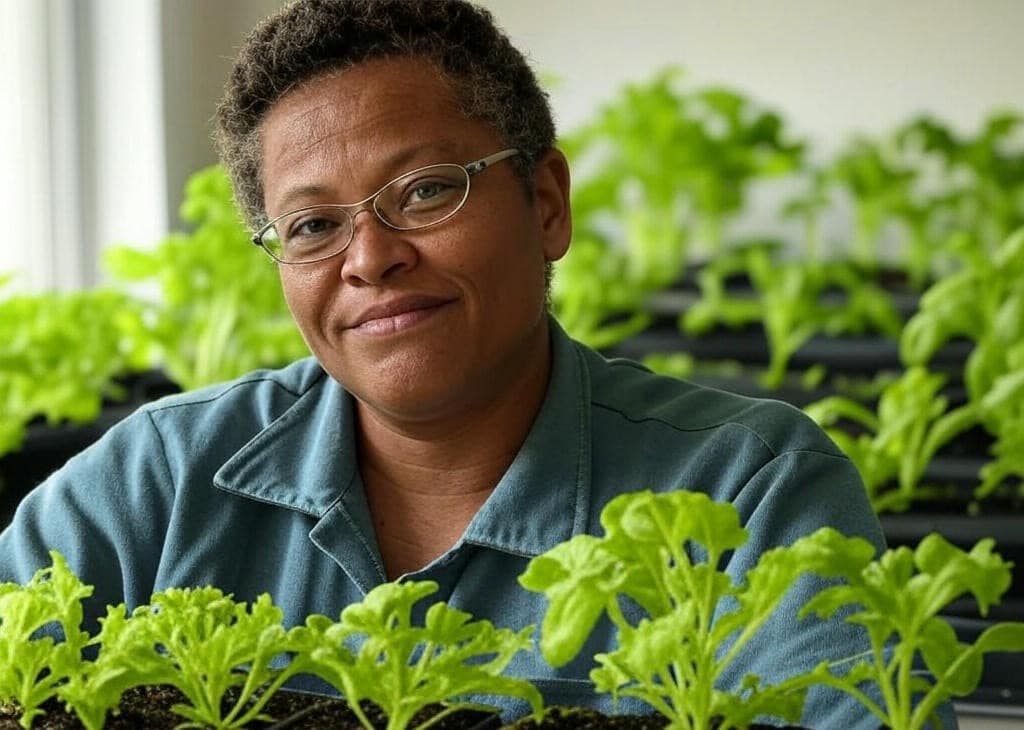Optimizing Hydroponic Towers: Vertical Farming
Table Of Content
A hydroponic tower is a vertical farming system that allows you to grow plants without using soil. Instead of planting into the earth, you grow crops in a columnar structure where their roots are exposed to a circulating nutrient-rich water solution. This method offers an incredibly efficient, sustainable, and space-saving way to grow food—whether you’re an urban gardener, a school administrator, or a commercial farmer.
Think of it as stacking your garden vertically. That’s essentially what a hydroponic tower does, allowing dozens of plants to thrive in the footprint of just a couple of square feet.

How Does a Hydroponic Tower Work?
The system functions through a simple but effective cycle:
1. Water Reservoir at the Base
A tank at the bottom holds water enriched with hydroponic nutrients—essential minerals like nitrogen, phosphorus, and potassium.
2. Submersible Pump
The pump pushes the water up to the top of the tower through a central pipe.
3. Gravity-Driven Flow
Water trickles back down through internal channels or tubes, flowing past plant roots nestled in slots or cups along the tower’s exterior.
4. Grow Media Support
Since there’s no soil, growers use inert materials like:
- Coconut coir
- Clay pebbles (LECA)
- Rockwool
These support the roots and retain moisture.
The result? Plants get everything they need—water, oxygen, and nutrients—without any of the drawbacks of traditional soil gardening.
Components of a Typical Hydroponic Tower
Here’s what you’ll typically find in a complete hydroponic tower setup:
- Tower structure: Usually made from food-grade PVC or molded plastic, with multiple plant slots.
- Pump: Low-wattage submersible pump for circulating water.
- Timer: Optional but useful for automating watering intervals.
- Grow lights: Full-spectrum LEDs if you’re growing indoors.
- Reservoir: A base container that holds the nutrient solution.
- Air stone & pump (optional): To oxygenate the water further.
Benefits of Using a Hydroponic Tower
Hydroponic towers aren’t just a modern gimmick—they offer real, measurable benefits:
Saves Space
You can grow 30–50 plants in just a few square feet, making it perfect for balconies, patios, or even kitchen corners.
Conserves Water
Hydroponic towers use up to 90% less water than traditional soil gardening. The closed-loop system recirculates unused water back into the reservoir.
Faster Growth
Direct access to nutrients means plants grow faster—up to 50% quicker in some cases.
Cleaner & Low Maintenance
- No weeding.
- No tilling.
- Fewer pests and diseases.
- No muddy messes.
Sustainable
Using less land, water, and fertilizer makes it ideal for eco-conscious growers.
What Can You Grow in a Hydroponic Tower?
Not every plant is a good fit, but hydroponic towers can grow a surprisingly diverse range of crops.
Best-Suited Crops:
- Leafy greens: Lettuce, spinach, kale, Swiss chard, arugula
- Herbs: Basil, parsley, thyme, mint, oregano, cilantro
- Fruiting plants (small varieties): Strawberries, cherry tomatoes, peppers
- Edible flowers: Nasturtiums, pansies, violas
Avoid:
- Root vegetables (carrots, potatoes)
- Large fruiting crops (corn, melons, pumpkins)
Types of Hydroponic Tower Systems
Different tower types cater to different needs:
-
Nutrient Film Technique (NFT) Towers
- Thin film of nutrients flows continuously.
- Great for herbs and lettuce.
- Requires consistent slope and water flow.
-
Drip Irrigation Towers
- Water drips down onto each plant.
- Slightly more complex but supports heavier crops like peppers or strawberries.
-
Aeroponic Towers
- Roots are misted in a closed chamber.
- Uses the least water and delivers rapid growth.
- Slightly more technical and requires fine mist nozzles.
Key Factors to Consider s
Before you set up your hydroponic tower, keep these important factors in mind:
Light
- Indoors: Use full-spectrum LED grow lights (12–16 hours/day).
- Outdoors: Ensure your tower receives 6–8 hours of direct sunlight.
Temperature & Humidity
- Ideal temperature: 65°F to 75°F (18°C to 24°C).
- Keep relative humidity around 50–70% to prevent mold or mildew.
Nutrient Management
- Use hydroponic-grade nutrients, not general garden fertilizers.
- Monitor:
- pH: 5.5–6.5
- EC (Electrical Conductivity): 1.0–2.5 (varies per crop)
Maintenance
- Clean the tower and pump every 2–3 weeks.
- Watch for:
- Root clogs
- Algae buildup
- Water discoloration
- Pump performance
DIY vs. Prebuilt Tower
| Feature | DIY Tower | Prebuilt Tower |
| Cost | $80–$200 | $300–$1000+ |
| Skill Requirement | Moderate to High | Low (plug-and-play) |
| Customization | High | Limited |
| Time Investment | High (design & troubleshooting) | Low |
| Aesthetic Appeal | Depends on build quality | Usually sleek and modern |
Cost Breakdown (Ballpark)
- Small Home System: $150–$300
- Mid-Sized Indoor Setup: $400–$800
- Full Commercial Vertical Tower System: $2,000 and up
Add-ons like automation kits, nutrient monitors, and professional lighting can increase your investment.
Common Challenges and Solutions
Even with the best setup, hiccups happen. Here’s how to handle them:
| Problem | Solution |
| Algae Growth | Keep tower opaque; clean regularly |
| Clogged Roots | Trim excess roots; don’t overplant |
| Nutrient Deficiency | Check pH/EC; adjust nutrient mix |
| Inconsistent Growth | Rotate tower or ensure even lighting |
| Pump Stops Working | Clean pump monthly; keep a backup if possible |
| Drooping or Yellowing | Likely nutrient imbalance or root rot; check immediately |
FAQs
How often do I need to check my system?
Ideally, every 2–3 days. Check water level, pump function, and plant health.
Is hydroponic produce safe to eat?
Absolutely. It’s just as nutritious—often more—since you control every input.
Can I grow in cold climates?
Yes, with proper indoor lighting and heating.
How long does it take to grow lettuce in a tower?
About 3–4 weeks from seedling to harvest.
Do I need to start with seeds or seedlings?
Both work. For faster setup, many people use hydroponically-started seedlings.
Table Of Content
